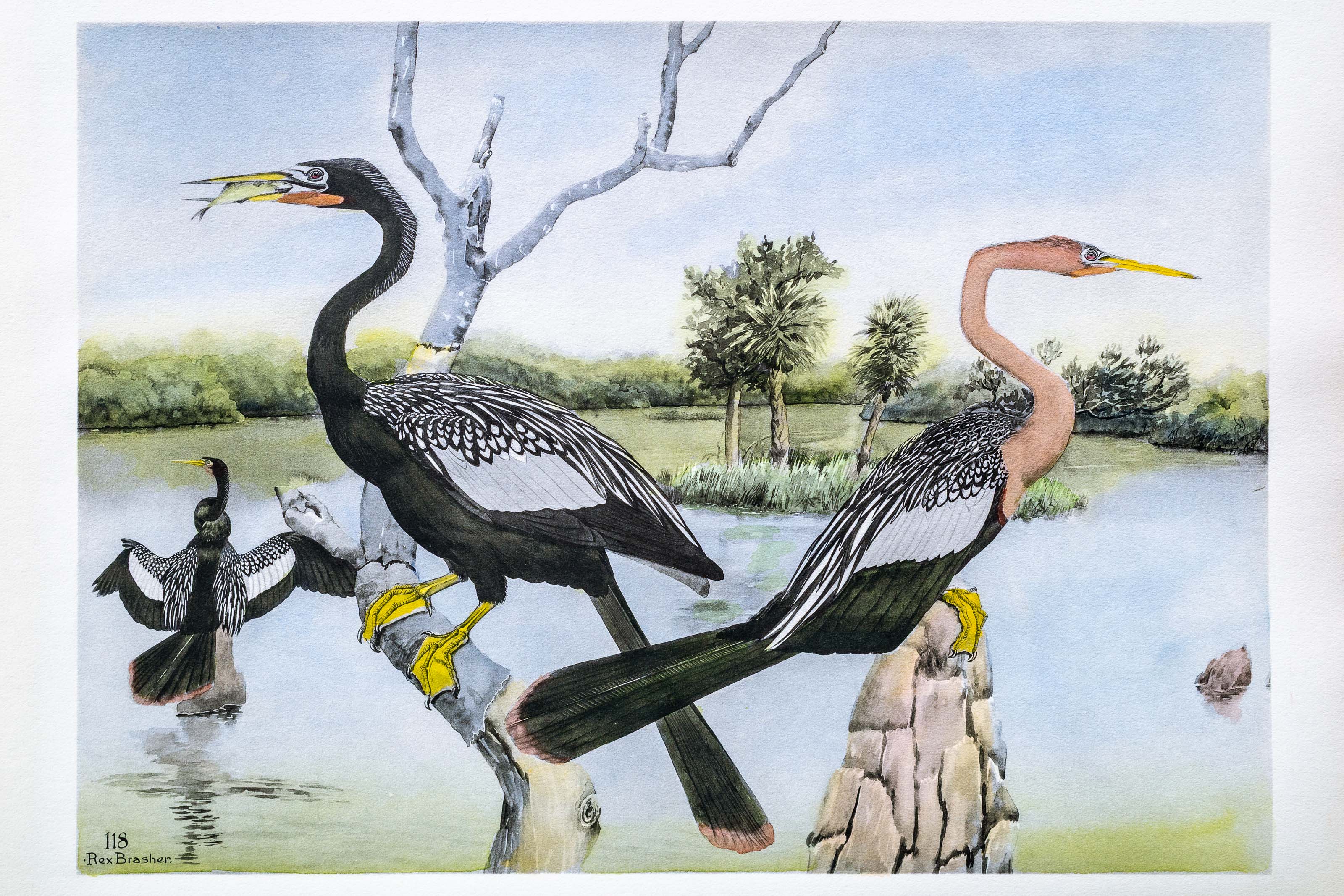
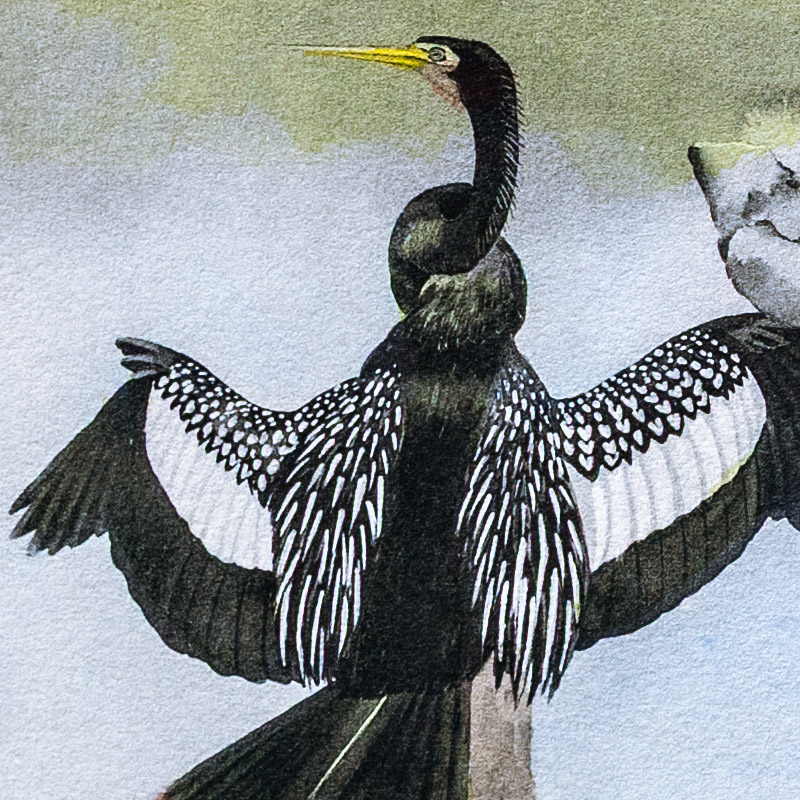

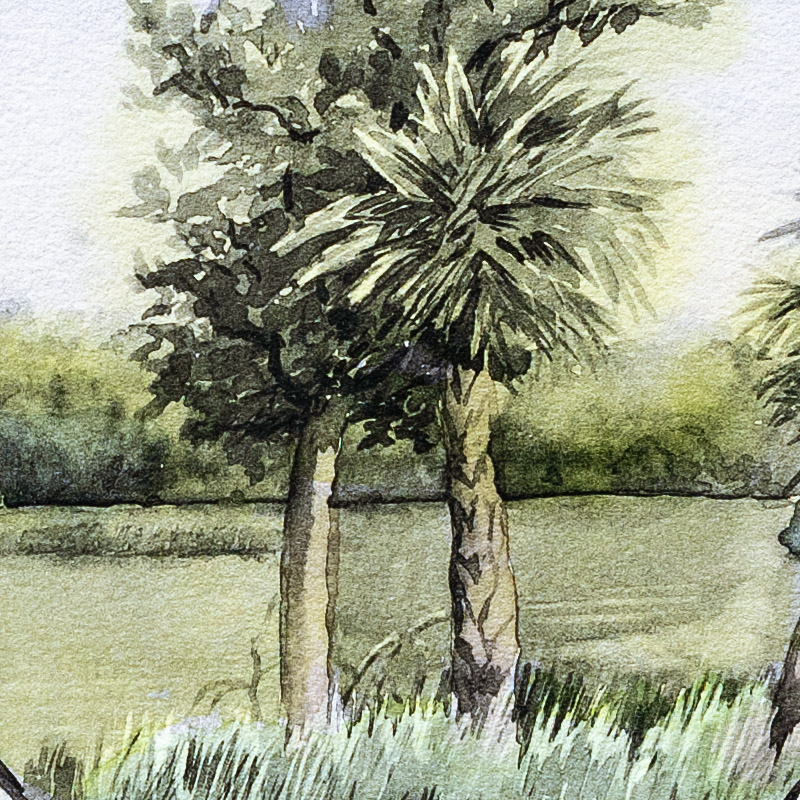
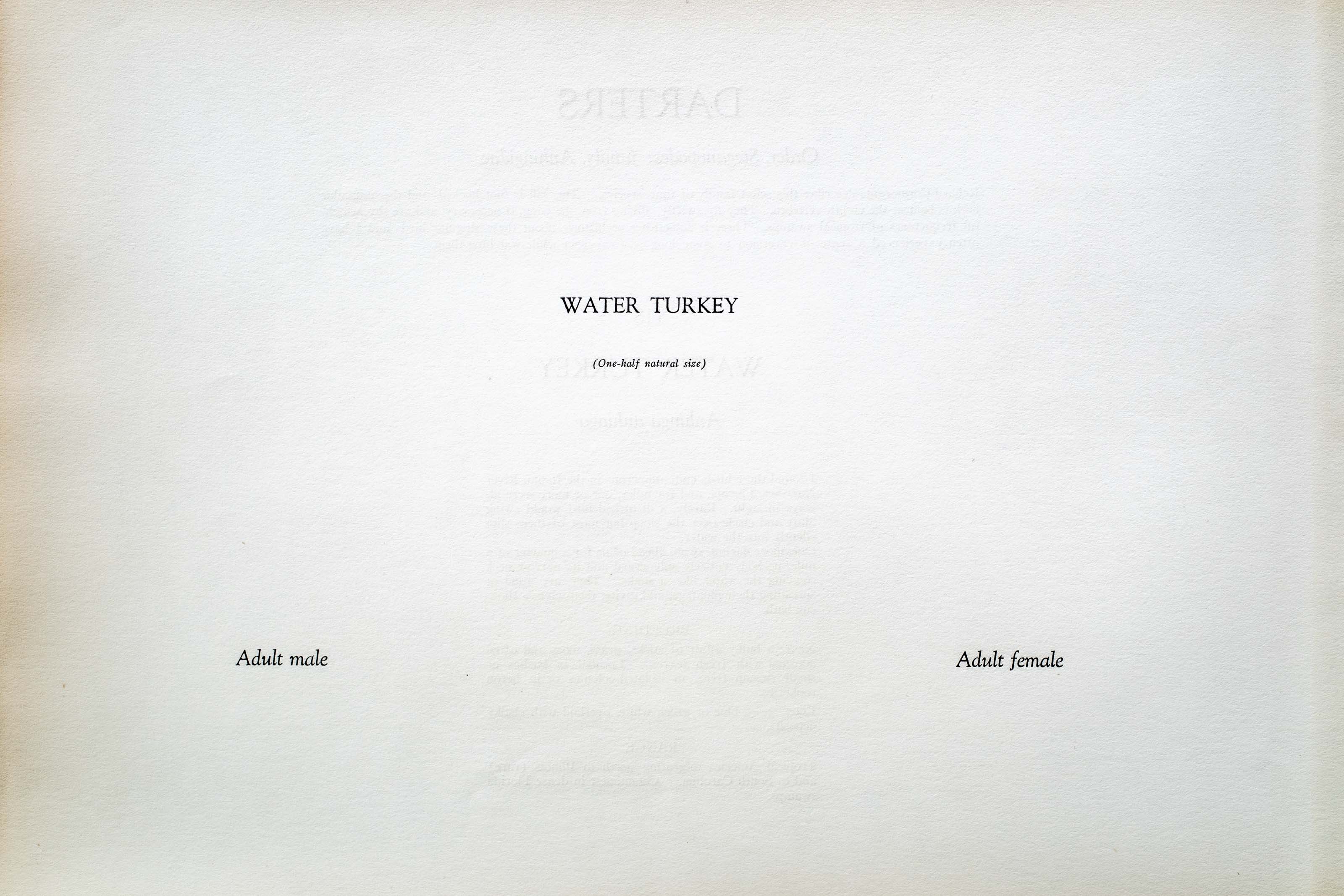
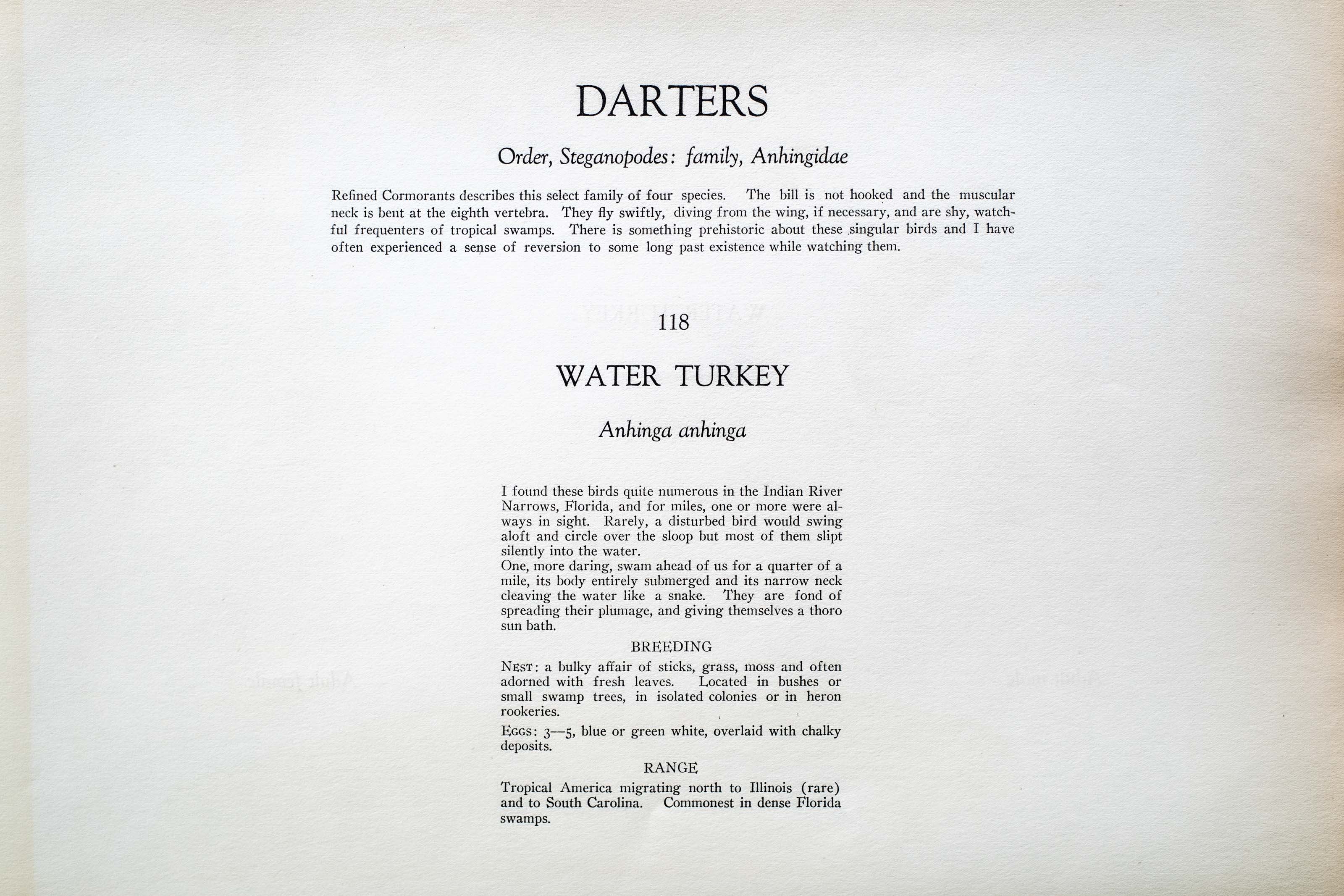

Unknown
1932
2
118
A team of dedicated board members, volunteers, and student interns has published every page in Volume 9. This volume includes 360 images of paintings and lyrical descriptions of birds, now available online for everyone to enjoy anywhere in the world. This is a monumental task. Each volume requires approximately 400 hours to photograph, edit, transcribe, catalog, and publish online. We need your support to complete this work.
If you're tech-savvy, have a good eye, are meticulous with details, and love structured data, please consider volunteering by emailing us at hello@rexbrasher.org.
We encourage all bird lovers and supporters to consider a monetary donation to support our mission to make Rex's work available for everyone. You can provide a one-time or recurring donation online.
I found these birds quite numerous in the Indian River Narrows, Florida, and for miles, one or more were always in sight. Rarely, a disturbed bird would swing aloft and circle over the sloop but most of them slipt silently into the water.
One, more daring, swam ahead of us for a quarter of a mile, its body entirely submerged and its narrow neck cleaving the water like a snake. They are fond of spreading their plumage, and giving themselves a thoro sun bath.
NEST: a bulky affair of sticks, grass, moss and often adorned with fresh leaves. Located in bushes or small swamp trees, in isolated colonies or in heron rookeries.
EGGS: 3–5, blue or green white, overlaid with chalky deposits.
Tropical America migrating north to Illinois (rare) and to South Carolina. Commonest in dense Florida swamps.